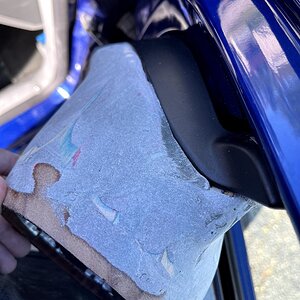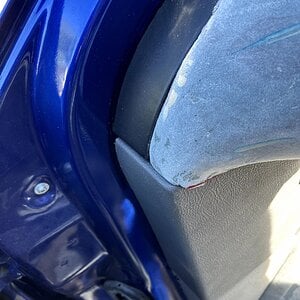Suicide Bobb 5,000+ posts
SPLC Fails
Mods: I think you should sticky this, or suggest another title for the thread and sticky the new thread. This will reduce a lot of threads that ask "How many X sized speakers does it take to equal the cone area of nX sized speakers?" and also hopefully be a quick reference sheet for even the experienced to look at.
THESE NUMBERS ARE NOT EXACT! I rounded for almost all of the numbers, and for the charts that compare X speakers to nX speakers, I only picked those that were closely related in cone area. Since my calculator does not have a Pi function, I multiplied the radius squared by 3.14, which as most of you know is close enough. This chart is only meant to give you an idea of how similar the cone area of X speakers is to nX speakers.
As you can tell, I only went for common sized speakers. I'm not going to include speakers like the ear-shaped Yamaha woofer, or some one-off sub like the custom MTX Thunder 1,000,000. The sizes I chose are those of known production speakers (off the top of my head). Please let me know of any that I left out, and I will update each category to include them.
--------------------
One Speaker
Diameter of speaker | Cone area of speaker in square inches
34" ---> 908
32" ---> 804
22" ---> 380
21" ---> 346
18" ---> 254
15" ---> 192
13.5" ---> 143
12" ---> 113
11" ---> 95
10" ---> 79
8" ---> 50
6x9 ---> 42
6x8 ---> 38
6.5" ---> 33
4x10 ---> 31
5x7 ---> 28
5.25" ---> 22
4" ---> 13
3.5" ---> 10
2" ---> 3
--------------------
Two Speakers
X Speaker | Equivalent of 2X Speakers
3.5" ---> 5.25"
4" ---> 5x7
5.25" ---> 6x9
5x7 ---> 8"
6x8/6x9 ---> 10"
8" ---> 11"
10" ---> 13.5"
11" ---> 15"
12" ---> 18"
15" ---> 22"
22" ---> 32"
--------------------
Three Speakers
X Speaker | Equivalent of 3X Speakers
2" ---> 3.5"
3.5" ---> 5x7/4x10
4" ---> 6x8/6x9
5x7 ---> 10"
4x10/6.5" ---> 11"
6x8 ---> 12"
8" ---> 13.5"
10" ---> 18"
12" ---> 21"
18" ---> 32"
--------------------
Four Speakers
X Speaker | Equivalent of 4X Speakers
2" ---> 4"
3.5" ---> 5x7/4x10
4" ---> 6x8/6x9
8" ---> 15"
10" ---> 21"
11" ---> 22"
15" ---> 32"
This post has been promoted to an article
THESE NUMBERS ARE NOT EXACT! I rounded for almost all of the numbers, and for the charts that compare X speakers to nX speakers, I only picked those that were closely related in cone area. Since my calculator does not have a Pi function, I multiplied the radius squared by 3.14, which as most of you know is close enough. This chart is only meant to give you an idea of how similar the cone area of X speakers is to nX speakers.
As you can tell, I only went for common sized speakers. I'm not going to include speakers like the ear-shaped Yamaha woofer, or some one-off sub like the custom MTX Thunder 1,000,000. The sizes I chose are those of known production speakers (off the top of my head). Please let me know of any that I left out, and I will update each category to include them.
--------------------
One Speaker
Diameter of speaker | Cone area of speaker in square inches
34" ---> 908
32" ---> 804
22" ---> 380
21" ---> 346
18" ---> 254
15" ---> 192
13.5" ---> 143
12" ---> 113
11" ---> 95
10" ---> 79
8" ---> 50
6x9 ---> 42
6x8 ---> 38
6.5" ---> 33
4x10 ---> 31
5x7 ---> 28
5.25" ---> 22
4" ---> 13
3.5" ---> 10
2" ---> 3
--------------------
Two Speakers
X Speaker | Equivalent of 2X Speakers
3.5" ---> 5.25"
4" ---> 5x7
5.25" ---> 6x9
5x7 ---> 8"
6x8/6x9 ---> 10"
8" ---> 11"
10" ---> 13.5"
11" ---> 15"
12" ---> 18"
15" ---> 22"
22" ---> 32"
--------------------
Three Speakers
X Speaker | Equivalent of 3X Speakers
2" ---> 3.5"
3.5" ---> 5x7/4x10
4" ---> 6x8/6x9
5x7 ---> 10"
4x10/6.5" ---> 11"
6x8 ---> 12"
8" ---> 13.5"
10" ---> 18"
12" ---> 21"
18" ---> 32"
--------------------
Four Speakers
X Speaker | Equivalent of 4X Speakers
2" ---> 4"
3.5" ---> 5x7/4x10
4" ---> 6x8/6x9
8" ---> 15"
10" ---> 21"
11" ---> 22"
15" ---> 32"
This post has been promoted to an article


